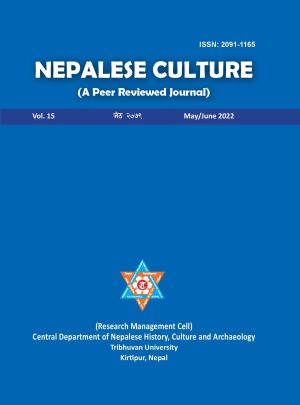Dialectics in Worshipping of Samai Mai Temple at Tilaurakot (Kapilvastu)
DOI:
https://doi.org/10.3126/nc.v15i1.48521Keywords:
Samai-Mai, Dialectics, Bio-psychologically, Socio-Culturally, Tangible, Intangible.Abstract
The aim of this paper is to explore the basic trend of dialectics in worshipping of Samai Mai temple at Tilaurkot, Kapilvastu. This cannot be denied that the dialectics or contradictory approaches might be thought to be the basic tenet of ameliorations. Dialectics here is used as debate/contradictions in behavioral patterns of the people in a specific culture. (People coming to worship Samai Mai) Dialectics is used as a gap between ideas and cultural beliefs and behavior of people in the Hindu cultural context. Celebrating worshipping is dialectic materialistic in nature it has great significance, bio-psychologically, socio-culturally, adaptive as well as perceived as religious. Religion is a ‘social glue’ that offers individuals purpose and meaning in their lives. That is why people believe in deities either for “Hope” or for “Fear”. They perform religious rituals as an honour to the divine power. Both worshipping and offering devotions, beliefs in cultural context are determined by their dialectics in it
Downloads
Downloads
Published
How to Cite
Issue
Section
License
© Central Department of Nepalese History, Culture and Archaeology, Tribhuvan University




